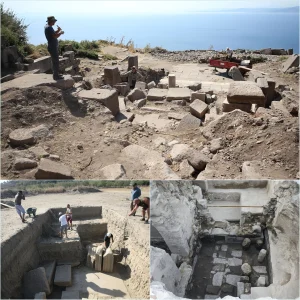A team led by experts from the Universitat Rovira i Virgili (URV) and the Max Planck Institute discovered a female burial among the remains of 25 individuals interred between the 12th and 15th centuries at the castle of Zorita de los Canes in Guadalajara, Spain. The castle, strategically located on a hill overlooking the Tagus River, was initially built in 852 AD by Emir Muhammad I of Córdoba as a defensive stronghold against Christian incursions. Over the centuries, it changed hands multiple times, notably falling under the control of the Knights Templar in 1124 and later granted to the Order of Calatrava by Alfonso VIII of Castile.

The Order of Calatrava, a Cistercian military order, was tasked with defending the frontier against Almohad attacks, playing a significant role in the medieval Christian-Muslim conflicts.

Part of the MONBONES project, the research focused on analyzing the diet, lifestyle, and causes of death of these medieval warriors. Carbon-14 and nitrogen-15 isotopic analysis of the bones indicated that despite their inland location, the knights enjoyed a high-protein diet typical of medieval elites, which included marine fish.
The excavation of 25 skeletons from the castle’s cemetery revealed that 23 of the individuals had died from violent causes, showing penetrating puncture wounds and blunt force injuries concentrated on vulnerable body parts such as the skull, legs, and pelvis. Carme Rissech, a researcher from URV, commented on the findings, stating, “We observed many injuries on the upper part of the skull, legs, and inside of the pelvis (coxal bone), which supports the hypothesis that they were warriors.”
This discovery provides valuable insights into the lives and deaths of medieval knights associated with the Order of Calatrava, shedding light on their role in the historical conflicts of medieval Spain.





